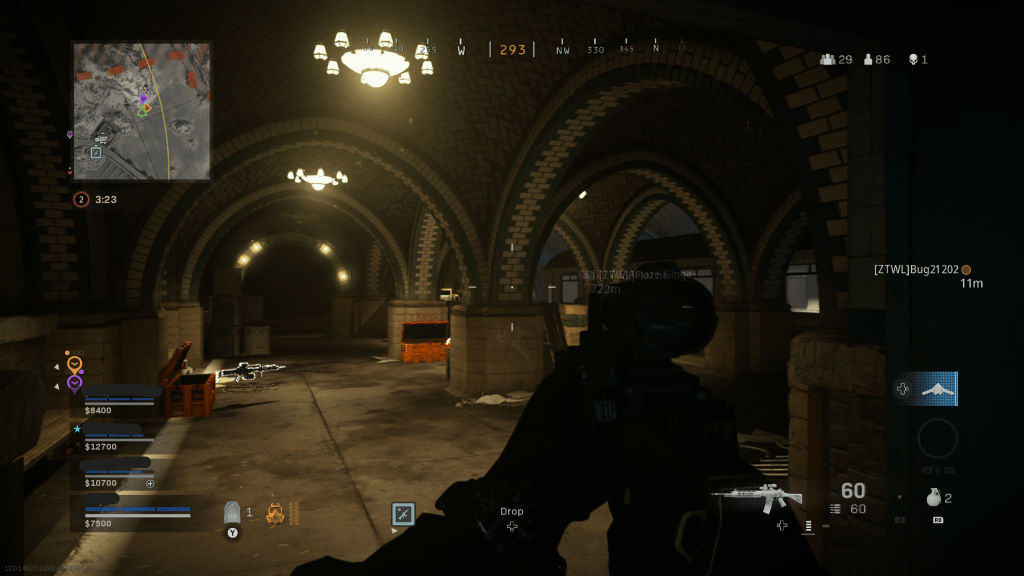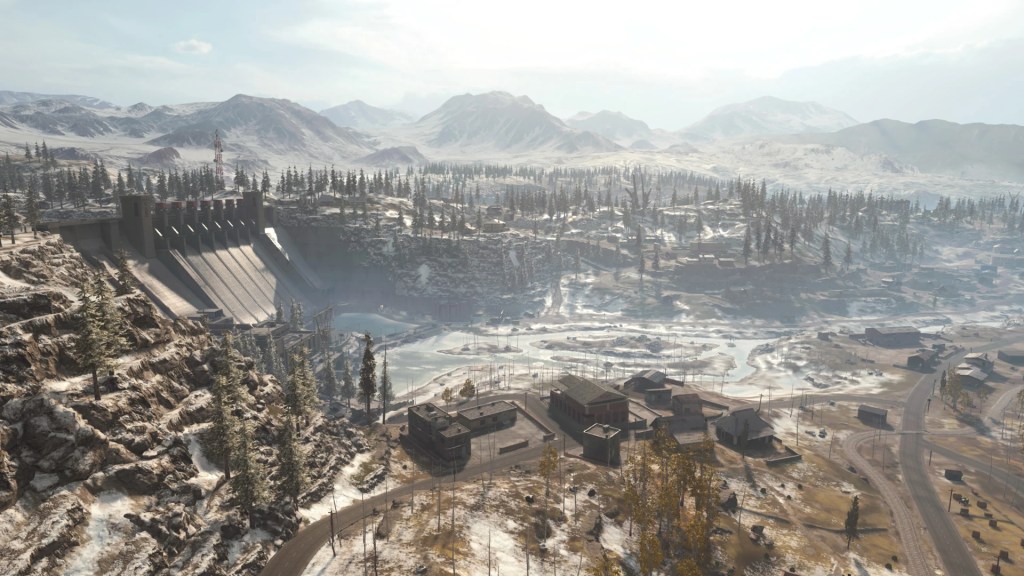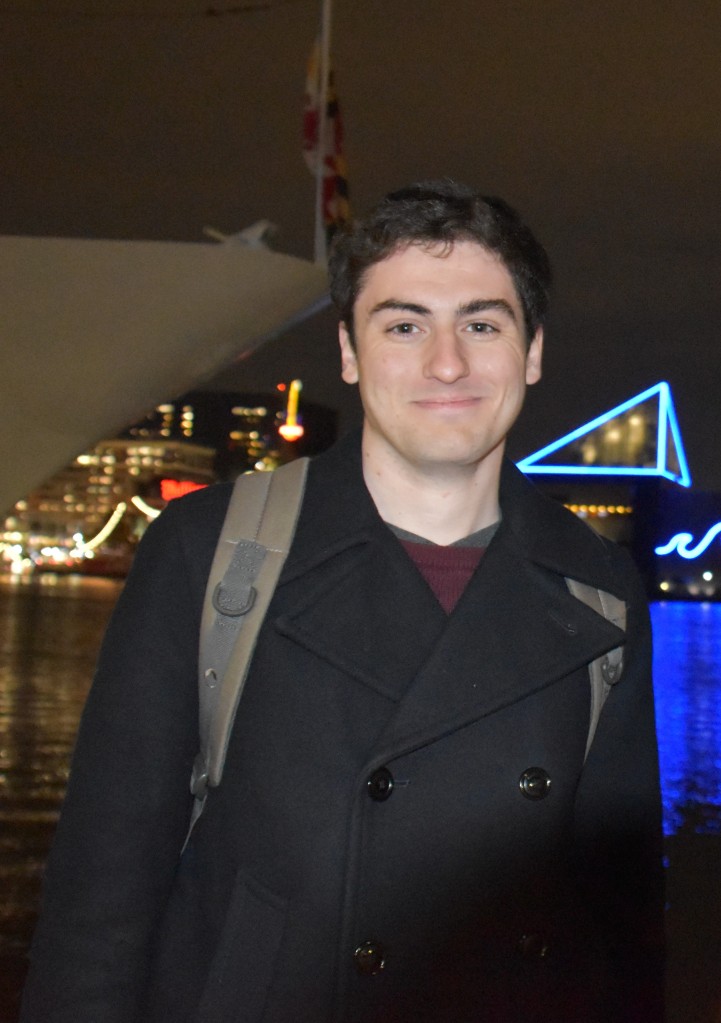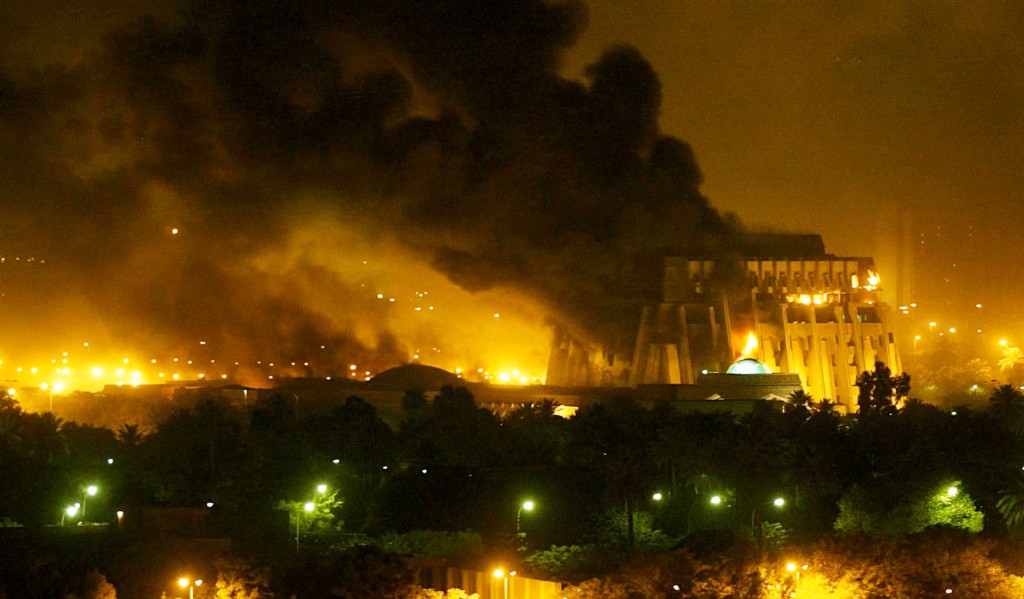Gora Dam, Verdansk, Kastovia (Credit: Call of Duty Modern Warfare, Infinity Ward)
Verdansk is an iconic battlefield familiar to many gamers from 2020. The city itself feels almost real. Almost.
The Call of Duty franchise is one of the perennial kings of gaming, first launching in 2003 and having a new main series release every year since, without exception, even amidst the COVID-19 pandemic. It’s a juggernaut in the industry, even if some of its games are less warmly received than others, Call of Duty has a staying power like few other gaming franchise.
Much can be said about the concept of reboots. The Modern Warfare subseries, developed by Infinity Ward starting in 2007 with the second entry in 2009 and the third in 2011, became some of the biggest video games of all time. Call of Duty was one of the kings of that era in gaming. In 2019, Infinity Ward decided to reboot the Modern Warfare subseries, with its first entry being titled Call of Duty: Modern Warfare (a game with this specific title had never actually been done in the franchise before. Its first two sequels used roman numerals to differentiate from the two sequels in the original series). The new Modern Warfare was an attempt to bring the idea of modern warfare back to the franchise after years of science fiction games, and to reboot the subseries with a more grounded approach. The original trilogy began fairly grounded but veered off into Red Dawn territory with a Russian invasion of the United States by the second entry. That’s not mentioning the multiple nuclear weapons, chemical attacks on mainland Europe, and the destruction of the Burj Al Arab hotel in Dubai. Verisimilitude was thrown out for iconic set pieces which are still fondly remembered a decade and a half later but left the subseries with nowhere to go to up the stakes. The reboot allowed Infinity Ward to get back to the roots of the Modern Warfare franchise’s identity with iconic characters in new ways and saw the release of a game which saw similar ubiquity to its forerunners. It just got that popular for a very different reason.
In the greatest gaming-related turn of fate of the twentieth century, Modern Warfare’s battle royale component, Warzone, was launched on March 10th, 2020. Six days later, the White House advised against large gatherings, and individual states began ordering lockdowns for their citizens. The only place people had to gather was online and gather online they did.
Owing to Modern Warfare’s refresh of longstanding franchise mechanics built with care and attention to detail, Warzone’s popularity skyrocketed due to its free-to-play release, engaging gunplay, and user-friendly mechanics. So many people, even those who weren’t serious gamers, spent hours upon hours trying to survive poison gas and other players in the city of Verdansk. There wasn’t much else to do in the early days of the pandemic where mass gatherings weren’t permitted, school and work went all online, many people lost their jobs, and businesses were shut down. Gaming provided a welcome reprieve from the frustrations of normal life for many people, and Warzone topped the charts of most played games on every platform.
Warzone’s story was an extension of the Special Ops missions of Modern Warfare, which were a cooperative set of missions that followed up the single-player campaign. The Spec Ops/Warzone story took place in a fictional Eastern European country named Kastovia, in its capital city of Verdansk after a devastating attack by a fictional terrorist group. Al Qatala’s home nation, the also fictional country of Urzikstan, was subject to a brutal Russian invasion for many years by a rogue General. Al Qatala (Translation: The Killers) was formed to fight them. Russian forces were driven out of Urzikstan during the events of the campaign, leaving Al Qatala free to assault a fictional Russian ally in its fictional capital city to get revenge. In an effort to hunt down Al Qatala’s higher ups and supplier, a Russian Ultranationalist named Victor Zakhaev, a joint task force between Eastern and Western backed forces is set up. After several successful operations, the fragile alliance is torn apart when Al Qatala releases chemical weapons around Verdansk and flees, leaving the survivors to fight for resources and a way out. This is the narrative justification for the Warzone game mode, explored through the cutscenes that accompanied the launch of each season of new content for the game.
While Warzone has been iterated upon in the four years since its original release, the initial map is widely viewed as the best. Verdansk was incredibly immersive, at least on the surface. The map has everything one would expect a city to have, such as: standalone houses, Soviet-style apartment blocks, health clinics, banks, fire and police stations, a hospital, a railway which includes a sizable train station, a port, a prison, a military base, a bustling downtown, a sports arena, farmland, a hydroelectric dam, and an airport. But it’s all not quite real. Almost like the dream of a city.
In fact, while wandering areas on quiet matches, the music from Inception fit quite well.
The Space Between
Liminality is a concept often explored in literature (movies, video games, television shows, etc. all count as literature) because it is the idea of being between things. Dusk and dawn being between night and day are frequent settings because they aren’t quite one thing or another. The dream state is a perfect example of this, as dreams come from REM sleep, and often occur between deep sleep and awakening. Liminality in relation to gaming is no new subject.
Christopher Nolan’s 2010 action thriller, Inception, was written around the concept of dreaming. In the movie, memory extractors explore someone’s dream to get information that they would never volunteer while awake. As part of this, the extractors have architects build dream worlds so that they can best manipulate the environment to get the information they need from the dreamer. Leonardo DiCaprio’s character, an extractor named Cobb, is teaching Elliot Page’s character, an architect named Ariadne, how to build dreamworlds. Cobb warns Ariadne never to build places from reality, as it is the surest way to lose oneself in a dream, saying, “Only use details, a streetlamp or a phone booth, never entire areas…Cause building a dream from your memory is the easiest way to lose your grasp on what’s real and what is a dream.”
In the same way, Verdansk is the real life city of Donetsk, Ukraine. Except it also isn’t. Verdansk does not closely resemble an actual city in terms of its civil planning. It was built as a video game environment first and foremost. That doesn’t mean it doesn’t look like a city or feel like a city. In the same way that games straddle the line between real and not real, video games are encroaching on that space as they become more detailed and realistic with the advances of technology. With enough processing power, one could hypothetically simulate the entire world on a 1:1 scale. The processing power requirements increase exponentially the more interiors are mapped, the more humans are programmed, and the more complex and detailed the lives of those digital people become. Games have reproduced immersive environments on a small scale, but a full recreation of earth would come mightily close to simulation theory. That line would blur even further if the simulated Earth was in a VR setup. Of course, this is all supposing that we’re not already living in a simulation.
Currently, realistic feelings when it comes to games can only go so far on a consumer level. Instead of a whole continent, a representation of a city to stand in for an actual city can only suffice. In that way, Verdansk straddles the line between something that feels real enough while in the middle of the action, even if the actual nuances fall apart when examined during a lull in the gunfire, explosions, and fleeing from poison gas. Verdansk uses heavy inspiration from real life for the details of its setting to trick the audience into a suspension of disbelief in its design. The city becomes immersive despite its lack of realism because it looks real. Verdansk has many details in common with its real life inspiration, such as the Arena and airport, which are virtually identical to those in Donetsk, Ukraine.
For example, many of the houses were only partially furnished, the only beds were on the second floor in an unfinished attic, and not set up as living spaces with no wardrobes or dressers to be found. The airport also seems real enough but still shows the limits of its plausibility after walking around slowly. The terminal feels a bit tricky to navigate as some of the lounge areas on the top floor are seemingly inaccessible without climbing onto boxes instead of taking a staircase. Furthermore, the runway is actually too narrow for the plane that’s destroyed next to the terminal building to actually operate on. Despite this, the building outwardly resembles the Donetsk International Airport opened in 2012 and destroyed in 2014. The air traffic control tower is taken right from the real Donetsk International, and details like having a parking garage across the street from the terminal connected by skybridge are accurate to the real life location. Even the railroad didn’t mesh with reality at first. While there was a train track on the map since launch, it didn’t travel around the map until about three months later and didn’t have a train traveling on it until two months after that.
The metro also takes inspiration from reality. While some of the stations were in the game from Verdansk’s launch, a few more were added with the launch of Season Six, which added in trains, and one of the many easter eggs. The normal metro stations were simple, white tiled stations which resembled many of the New York City Subway stations so common throughout the city and in media set inside the city. Verdansk’s Subway Easter Egg led players to an abandoned station not normally accessible during gameplay with top tier loot to help combatants gain a competitive edge. The interesting thing to note is the architecture of this station. It closely resembles the disused IRT City Hall Station in New York City.


Verdansk went through its fair share of changes in the year and a half it was the Warzone map. A few months after 2020’s entry into the Call of Duty series was released, Verdansk received an update, which took it back in time to 1984. Call of Duty 2020 was subtitled Black Ops: Cold War, taking place in Treyarch’s Black Ops subseries which now merged with the Modern Warfare reboot timeline. The updates to Verdansk ’84 were mostly cosmetic, though the quarry was completely replaced by a different salt mine, the imposing Gora Dam was replaced by a military communications facility and a viaduct, a massive radar array similar to the Duga Radar near Chernobyl was added, and the arena was replaced by a smaller stadium in the middle of demolition to build the stadium seen in the original iterations of the map. The large tower in the center of downtown was initially under construction in Verdansk ’84 but was replaced with a detailed recreation of Nakatomi Plaza from Die Hard as part of an event. Nakatomi Plaza used the real life Fox Plaza in Los Angeles as a shooting location. The new building and surrounding area were so beloved that they were kept in place of the canonical tower until Verdansk was replaced by a new map following the release of 2021’s Call of Duty: Vanguard.
Real and Real-ish
All of these things call to mind familiar scenes and places, even if they’re not quite in their right places. Dreamworlds can feel realistic even when certain things are out of place. It doesn’t occur to us while we dream that a building which we see in one city might be from an entirely different continent. In the same way, seeing LA landmark Nakatomi/Fox Plaza in a fictional Eastern European city in the early 80s may not feel out of place in the middle of one gunfight or while looking to find cash and equipment for the next gunfight, the closer scrutiny during a break in the fighting causes the illusion to slip a little bit. Additionally, the game incorporated many maps from former Call of Duty titles, such as the TV station being a recreation of Broadcast or the map Vacant showing up as offices in the port. (Both maps were originally from Call of Duty 4: Modern Warfare, which was the original game in the subseries.)
This utilization of familiar environments from both games and reality contributes to that blurring of the line and enhances the dreamlike quality of the environment. Familiar places make one feel at home in the environment. There’s just enough of reality to trick us into being comfortable in the fake environment that we feel it’s a real place. Verdansk’s quality of being just close enough to reality to feel real while not holding up under closer scrutiny is a perfect example of the liminality showcased in video games. For ages, maps in games have felt like they’re hanging in between worlds. Office buildings and residential blocks feel like they’re just close enough to reality that they feel real while you’re in them, and then you think, “Wait, why didn’t that house have a bathroom?” or “Were there enough desks in that office?” and the illusion starts to crumble.
What cannot be overlooked in the case of Verdansk is the timing of its release: March 2020. Verdansk was a city with no people except the ones fighting and killing each other. While that’s something in common with many battle royale games, many of them don’t have the same graphical fidelity for which the Call of Duty series has always strived. At the same time many people were wandering a virtual city devoid of people with the sense of danger around every corner, the real world was shut down over the pandemic lockdowns. The empty, foreboding streets of Verdansk’s downtown Tavorsk District called to mind the empty, foreboding streets of Broadway in New York City. Our minds are so used to seeing these places open and teeming with life that the absence of crowds made something feel so very wrong. It was Verdansk having that normal feeling for a video game map and the real world having a very abnormal feeling that helped blur the lines between reality and fantasy even more, which in turn made Verdansk feel more realistic than it probably should have.
Even without the pandemic, Verdansk being based on Donetsk should rung familiar bells for well-read gamers. The Donbas region of Ukraine, the seat of Donetsk, has been at war with Russia since 2014. Recall that Warzone released in 2020, almost exactly two years before Vladimir Putin would order the total invasion of Ukraine in an extension of the war he started in 2014 that still rages today. A cityscape wracked with combat inspired by Donetsk while the real Donetsk was being torn apart by brutal fighting may have hit a little too close to home. Without the full Russian-Ukrainian war dominating the headlines, however, the images might have been fuzzier or not as prominent to many people around the world. It existed only as slightly hazy memories in the minds of many people or had even been forgotten in the minds of others.
The entirety of Verdansk has been unplayable in Call of Duty since December 2021, when it was replaced by a new map set on a Pacific Island. Now, only small sections of Verdansk are playable on the Spec Ops missions and a few multiplayer maps for a large scale game mode, but even those rely on finding other people to play with in Modern Warfare 2019’s multiplayer mode. Most of Verdansk now only exists in memories from years ago. Much can be said about memories and dreams, and there is great nostalgia for Verdansk and a strong community desire for its return. In a fashion, Verdansk’s return on Warzone Mobile has sated some of the nostalgia, but its recent release and exclusivity to phones still leaves much to be desired in the minds of other fans. More simply, a top of the line phone still doesn’t come close to playing on a cutting edge PC or console. There are rumors of Verdansk’s return to the main games later this year, but as of now, those are only rumors. The map’s popularity led to its return in the campaign of 2023’s Call of Duty: Modern Warfare III in several missions. The environments shown were lovingly recreated from the original game, and in many ways, felt just like coming home.
Call of Duty has a habit of basing fictional places on real ones. Verdansk was not the only Warzone map that took heavy inspiration from a real life place. When 2022’s Modern Warfare II was released, the fictional city of Al Mazrah was the location for the new Warzone map. Al Mazrah seemed to take heavy inspiration from Baghdad, as one Iraqi redditor pointed out. The similarities warranted a second post for comparison. Baghdad had been wracked with conflict for years starting with the Gulf War in 1991 and escalating after the American invasion in 2003 and subsequent occupation. For its portrayal in an American shooter game to be an environment that was, by all measures, doing fairly well for itself was pretty miraculous, even if it became a battleground again. Al Mazrah’s design was a small recognition of the progress that Baghdad has made in recovering after the Iraq War in 2003, while Verdansk was more of a lamentation of what was lost in the earlier stages of the war. The city of Donetsk today is practically leveled in many areas, having seen renewed fighting since the Russian Army entered Ukraine in 2022. Verdansk may have been dreamlike at the time, but the real place is straight out of a nightmare.
Ultimately, Verdansk is but one example of gaming’s habit of blurring the lines between reality and fantasy. In the same way a dream’s boundaries are disguised by the mind through clever ways, Verdansk pulls enough in from the real world to trick players into feeling as though it’s real enough that it could be a destination for potential flights. Gaming is becoming more realistic and more impactful with each year, and games are becoming more engrossing with every step they take towards reality.
Video games are a way to escape reality for a little while, but that sensation may not last if they keep sliding closer to being authentic realities of their own.







Leave a comment